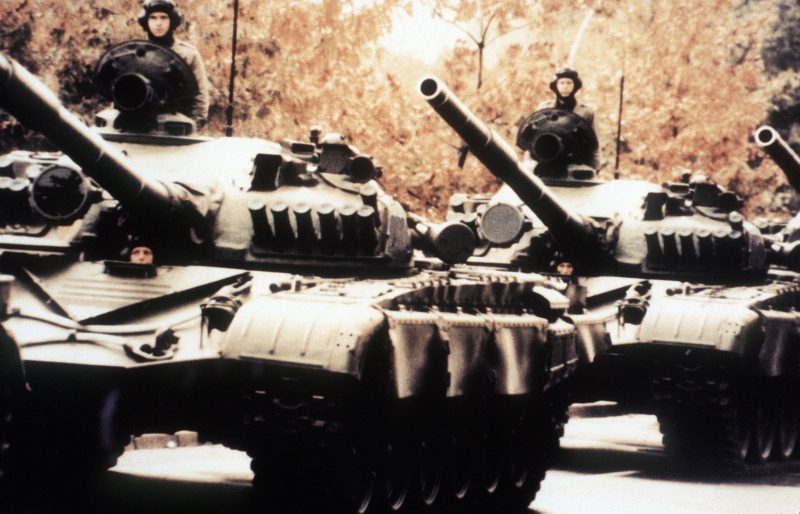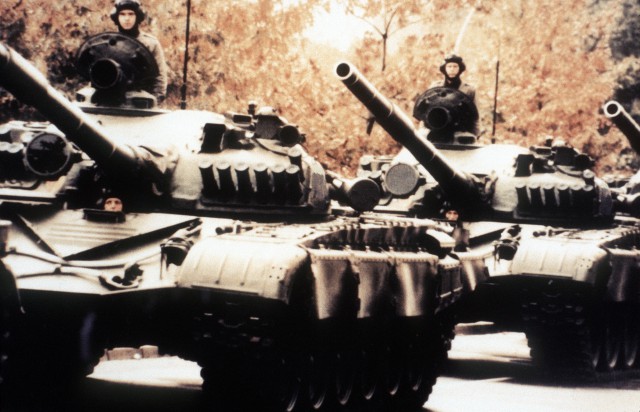Few moments in history have been scarier than the ten days in November 1983 when the world held its breath as the United States and the Soviet Union almost came to a full-blown nuclear conflict that would have left millions dead. Mountains of documents from both sides, both in the intelligence and leadership communities, reveal how close the world came to Armageddon.
Where did this threat come from? A military exercise.
Not just any exercise could have caused a near-war. Even its name, Able Archer 83, is benign enough. In fact, the whole simulation was based upon how NATO would transition from conventional war to the releasing nuclear warheads against the Soviet Union. These types of exercises were normal and regular occurrences.
However, this time NATO changed its readiness level to the highest condition, DEFCON 1, which gave the Soviets a more anxious concern. Was this really just an exercise, or was it a ruse for the dreaded first strike? A false alarm could have started nuclear destruction; this sense of urgency prompted Soviet General Secretary Yuri Adroprov to warn U.S. Ambassador Averell Harriman as early as May 1983 that the two sides were getting perilously close to becoming embroiled in such a misunderstanding. This statement was a sign that the Soviets had no desire for detente to deteriorate to that point.
General Varfolomei Korobushin would describe the early 80’s as a pre-conflict era of Russian history. It was so bad that the Kremlin Central Committee slept in shifts. It didn’t help Soviet paranoia that the United States had positioned large numbers of Pershing II ballistic missiles, making a first-strike by Russia an untenable option.
The paranoia reached an insanity level. Entire sections of the KGB were assigned to Operation RYAN, which was a mission to see if the US and NATO were indeed about to attack. It was so bad that multiple informants warned the CIA in the United States about the Soviet concern. When informed of just how badly the Russians were afraid of such an invasion and strike, President Reagan was amazed; not even sure the reports could be accurate.
Russians, however, have a well-founded fear of attack. In 1812, Napoleon Bonaparte launched an invasion numbering over 600,000 men into Russia. It was the largest invasion in military history up to that point and resulted in over a million casualties from both sides. In 1941 Hitler launched millions of troops into Russia in Operation Barbarossa, the largest invasion in military history. This attack cost the Russians millions of casualties alone, besides the massive German losses.
In less than 150 years, Russia had suffered the two largest military invasions in the history of mankind. A very genuine invasion fear persevered among the populace, spurred on by President Reagan’s personal belief that the Soviets were the Evil Empire, on par if not worse than their one-time Nazi allies, the Wired.com reports.
The spies of Operation RYAN monitored everything — the status of bomb-shelters, official publications to the public, the manufacturing status of war-materials. They went so far as to spy on religious leaders to see if their sermons were developing into a more war-oriented message. In the end, it was the effort of RYAN that helped convince the Kremlin that they were reading too much into Able Archer 83.
War was fortunately avoided, yet there were few times in the Cold War era when WWIII came so close to being a reality. Despite the avoidance of nuclear war, that time was filled with a threat of mutual annihilation from paranoia and massive militia and arsenals glowering at each other.

